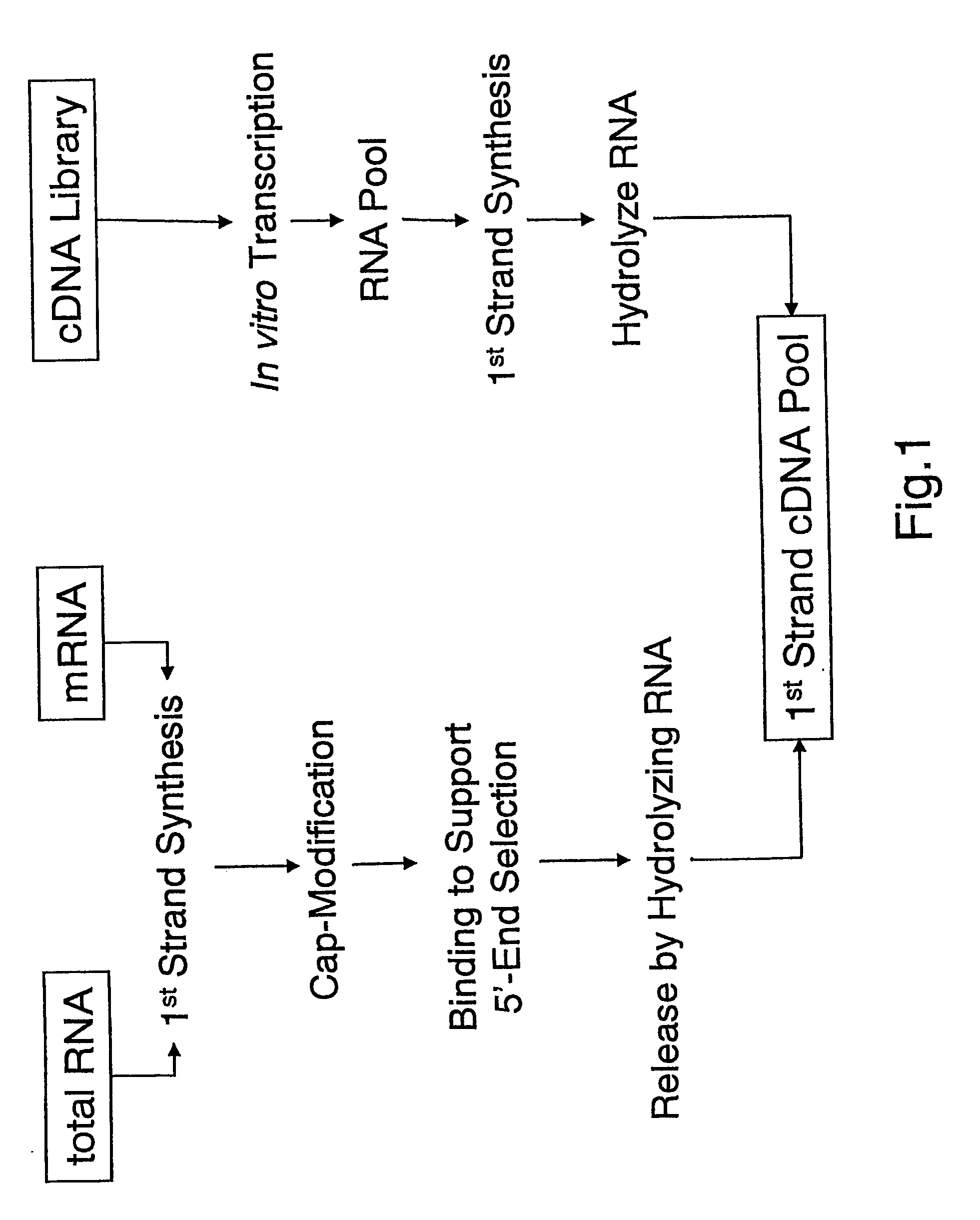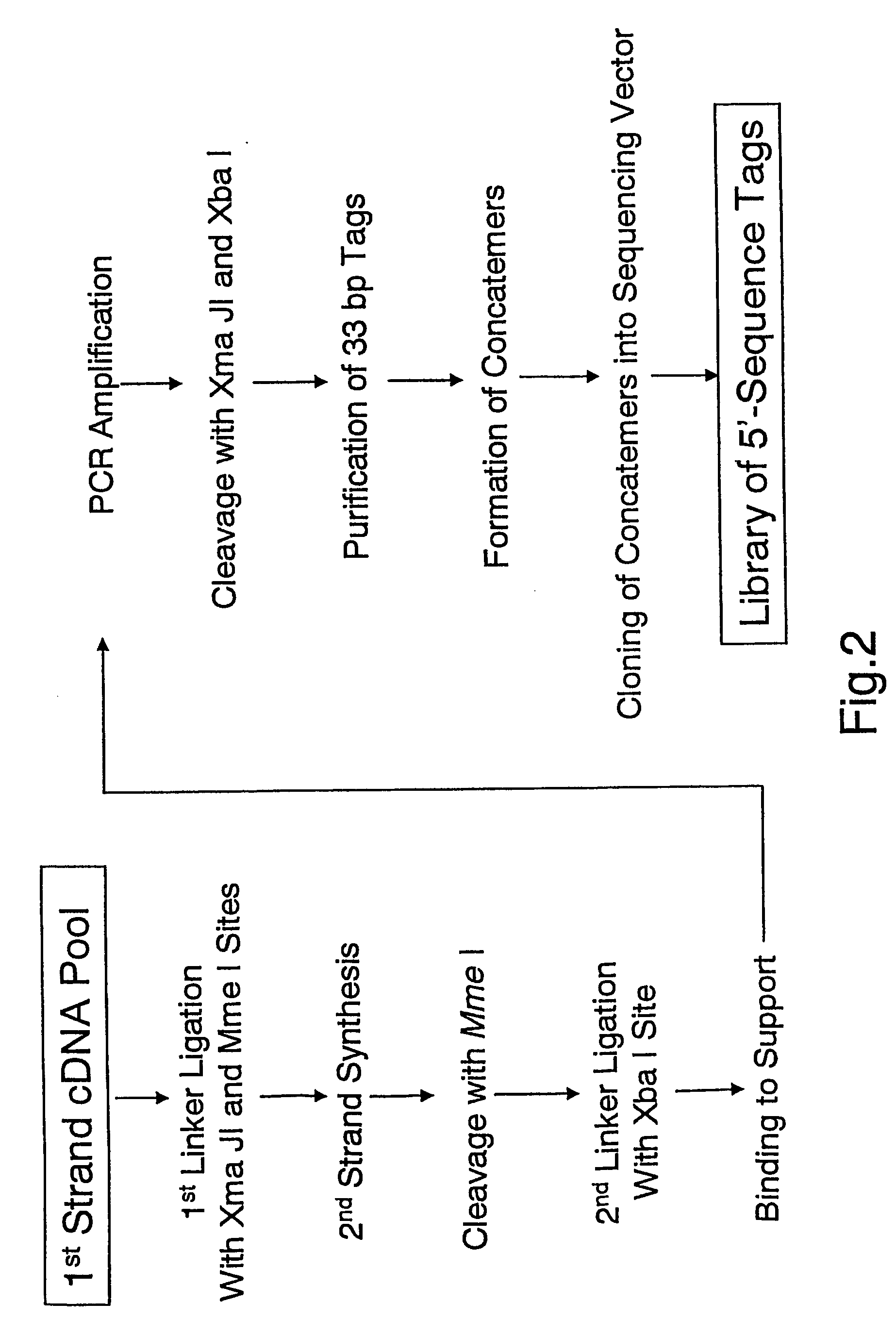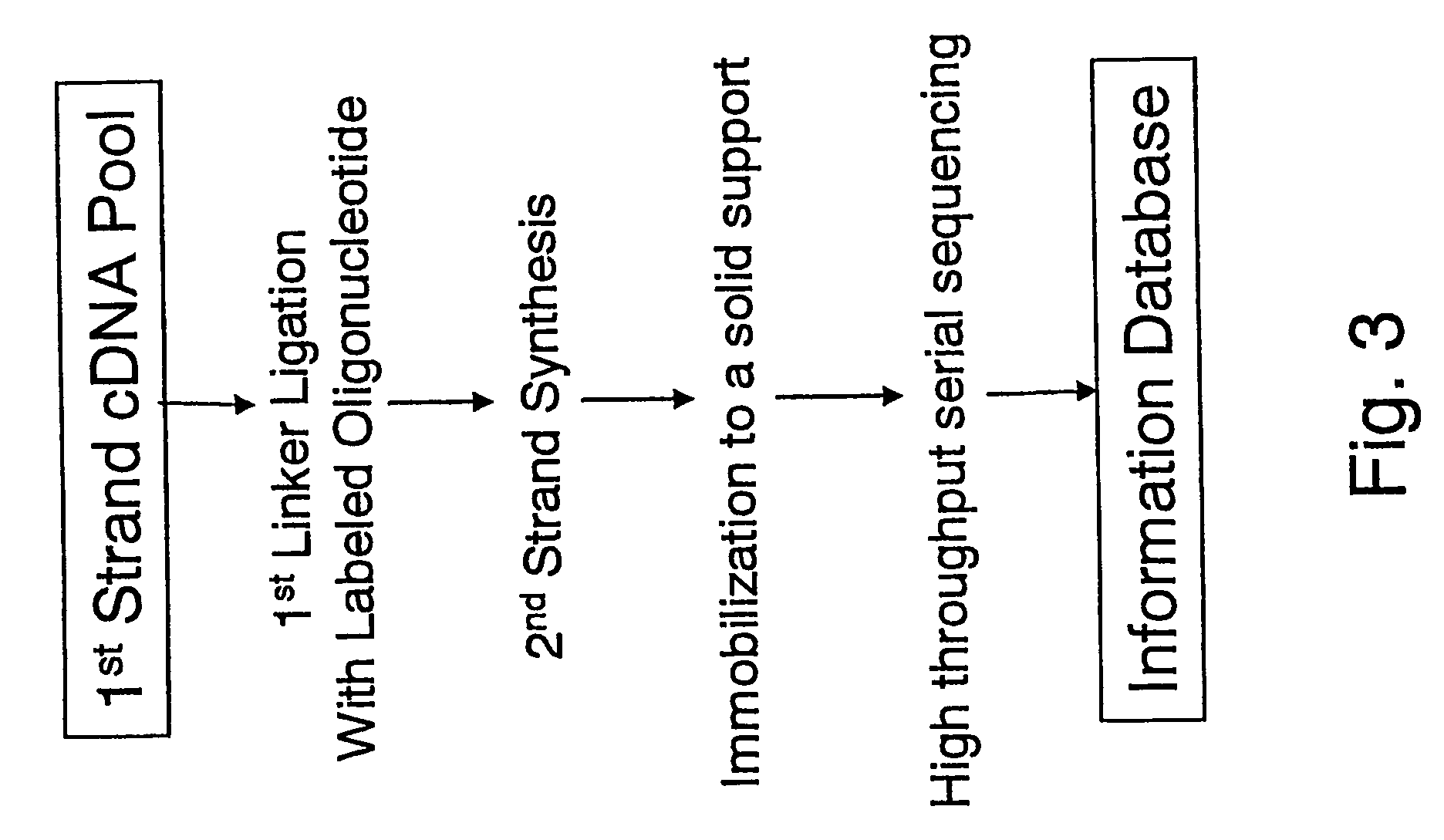Method of utilizing the 5'end of transcribed nucleic acid regions for cloning and analysis
a technology cloning, which is applied in the field of utilizing the 5'end of transcribed nucleic acid regions for cloning and analysis, can solve the problems of limited approach, limited efficiency of conventional methods in analyzing gene expression profiles and identifying rare genes, and difficult to clone new genes based on the information in such short sequences at the 3′ end
- Summary
- Abstract
- Description
- Claims
- Application Information
AI Technical Summary
Benefits of technology
Problems solved by technology
Method used
Image
Examples
example 1
Preparation of 5′ End Specific Tags According to the Invention Omitting Di-Tags
[0083] To perform the invention mRNA or total RNA samples can be prepared by standard methods known to a person trained in the art of molecular biology as for example given in more detail in Sambrook and Russel, 2001. Carninci P. et al. (Biotechniques 33,306-9, (2002)) described one such method used herein to obtain cytoplasmic mRNA fractions, however, the invention is not limited to this method and any other approach for the preparation of mRNA or total RNA should allow for the performance of the invention in a similar manner.
[0084] The preparation of mRNA from total RNA or cytoplasmic RNA is preferable but not essential to perform the invention as the use of total RNA can provide satisfying results in combination with the cap-selection step described below in this example. Generally speaking, mRNA represents about 1-3% of the total RNA preparations, and it can be subsequently prepared by using commerc...
example 2
Alternative Preparation of 5′ End Specific Tags Involving the Formation of Di-Tags
Preparation of Total RNA from Tissue
[0127] In the literature a variety of different approaches for the preparation of RNA have been described, which are known to a person experienced in the state of the art. All such approaches should allow the preparation of a plurality of RNA samples derived from biological materials including tissues and cells, which are suitable for the invention. Below two such procedures are described in detail.
Buffers and Solutions:
[0128] a) Solution D: 4M guanidinium thyocyanate, 25 mM sodium citrate (pH7.0), 100 mM 2-mercaptoethanol and 0.5% n-lauryl-sarcosine.
[0129] b) RNase-free CTAB / UREA solution: 1% CTAB (Sigma), 4M UREA, 50 mM Tris-HCl (PH 7.0), 1 mM EDTA (pH 8.0).
[0130] c) Water equilibrated phenol as described in Molecular Cloning (Sambrook and Russel, 2001).
[0131] Phosphate-buffer saline (PBS) as described in Molecular Cloning (Sambrook and Russel, 2001)
[0132...
example 3
Alternative Preparation of 5′ End Specific Tags Involving the Formation of Di-Tags
[0428] The invention can be performed with other linkers and restrictions enzymes than specified in the Examples 1 and 2. In one such embodiment, the invention was performed with the following changes, where the same protocols were used as specified in the aforementioned Example 1 if not otherwise noted: RNA samples were prepared as described above and forwarded to first-strand cDNA synthesis. The resulting cDNA-RNA hybrids were fractionated by the Cap-Trapper approach, and cDNA transcript comprising sequences homologous to the 5′ end of mRNA were isolated. Single-stranded cDNA was then ligated to a different first linker comprised of the following oligonucleotides:
Upper Strand:(SEQ ID NO: 19)Bio-5′-agagagagagcttagatgagagtgaCTCGAGCCTAGGtccaacgNNNNN-3′(SEQ ID NO: 20)Bio-5′-agagagagagcttagatgagagtgaCTCGAGCCTAGGtccaacNNNNNN-3′Lower Strand:(SEQ ID NO: 21)Pi-5′-gttggacctaggctcgagtcactctcatctaagctctctctct...
PUM
| Property | Measurement | Unit |
|---|---|---|
| volume | aaaaa | aaaaa |
| volume | aaaaa | aaaaa |
| temperature | aaaaa | aaaaa |
Abstract
Description
Claims
Application Information
 Login to View More
Login to View More - R&D
- Intellectual Property
- Life Sciences
- Materials
- Tech Scout
- Unparalleled Data Quality
- Higher Quality Content
- 60% Fewer Hallucinations
Browse by: Latest US Patents, China's latest patents, Technical Efficacy Thesaurus, Application Domain, Technology Topic, Popular Technical Reports.
© 2025 PatSnap. All rights reserved.Legal|Privacy policy|Modern Slavery Act Transparency Statement|Sitemap|About US| Contact US: help@patsnap.com



